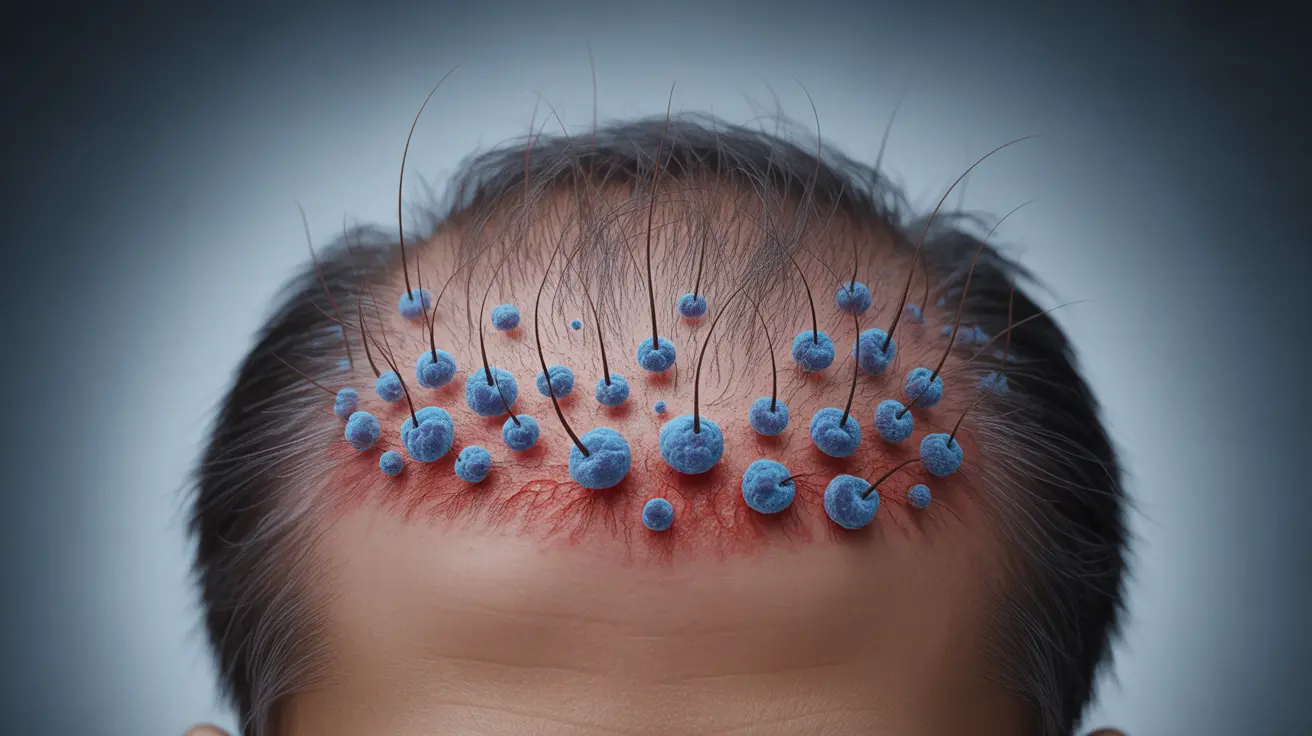The relationship between smoking and hair loss has become increasingly clear through scientific research. This harmful habit doesn't just affect your lungs and heart – it can also have a significant impact on your hair health, potentially leading to premature balding and thinning hair.
Understanding how smoking affects your hair follicles and overall hair health is crucial for anyone concerned about maintaining a healthy head of hair. Let's explore the scientific evidence behind this connection and what it means for both current smokers and those thinking about quitting.
How Smoking Damages Hair Follicles
Smoking has multiple devastating effects on hair follicles and the surrounding tissues that support healthy hair growth:
- Reduced blood circulation to the scalp
- Increased oxidative stress on hair follicles
- Disruption of hormone balance affecting hair growth
- DNA damage to hair follicle cells
The toxic chemicals in cigarette smoke directly damage the DNA of hair follicles, while also constricting blood vessels that supply vital nutrients to your scalp. This double assault can significantly impact your hair's health and growth cycle.
The Link Between Smoking and Male Pattern Baldness
Research has shown that smoking can accelerate the onset of male pattern baldness, particularly in men who are already genetically predisposed to this condition. The combination of reduced blood flow and increased DHT sensitivity in smokers can create perfect conditions for premature hair loss.
Impact on Hormones and Hair Growth
Smoking affects various hormones in the body, including those that regulate hair growth cycles. This hormonal disruption can lead to:
- Earlier onset of androgenetic alopecia
- Increased sensitivity to DHT (dihydrotestosterone)
- Disrupted hair growth cycles
- Slower hair regeneration
Smoking Intensity and Hair Loss Correlation
Studies have demonstrated a direct relationship between the number of cigarettes smoked daily and the severity of hair loss. Heavy smokers often experience more significant and faster progression of hair loss compared to light smokers or non-smokers.
Additional Effects on Hair Quality
Beyond causing hair loss, smoking also affects the quality and appearance of existing hair through:
- Premature graying
- Brittle and dry hair texture
- Decreased shine and vitality
- Slower hair growth rates
Benefits of Quitting Smoking for Hair Health
While some smoking-related damage may be permanent, quitting smoking can help prevent further hair loss and improve overall hair health. After quitting, many people experience:
- Improved blood circulation to the scalp
- Better nutrient delivery to hair follicles
- Reduced oxidative stress
- Stronger, healthier new hair growth
Frequently Asked Questions
Does smoking cause hair loss and how does it affect hair follicles?
Yes, smoking causes hair loss by damaging hair follicles through reduced blood circulation, increased oxidative stress, and direct DNA damage. The toxic chemicals in cigarette smoke restrict blood vessels, limiting nutrient delivery to hair follicles and compromising their health.
How does smoking lead to early-onset male pattern baldness?
Smoking accelerates male pattern baldness by increasing sensitivity to DHT, disrupting hormone balance, and reducing blood flow to the scalp. These factors combine to speed up the natural balding process in genetically susceptible individuals.
Can quitting smoking help reverse or prevent further hair loss?
While quitting smoking cannot reverse permanent hair loss, it can help prevent further damage and create better conditions for healthy hair growth. Improved blood circulation and reduced oxidative stress after quitting can support healthier hair follicle function.
What is the relationship between the number of cigarettes smoked and the severity of hair loss?
There is a direct correlation between smoking intensity and hair loss severity. Heavy smokers typically experience more severe and rapid hair loss compared to light smokers, with the risk increasing with the number of cigarettes smoked daily.
Does smoking also cause premature graying and damage to existing hair?
Yes, smoking can cause premature graying and damage to existing hair by increasing oxidative stress, reducing melanin production, and compromising the hair's structural integrity. This results in duller, grayer, and more brittle hair.




